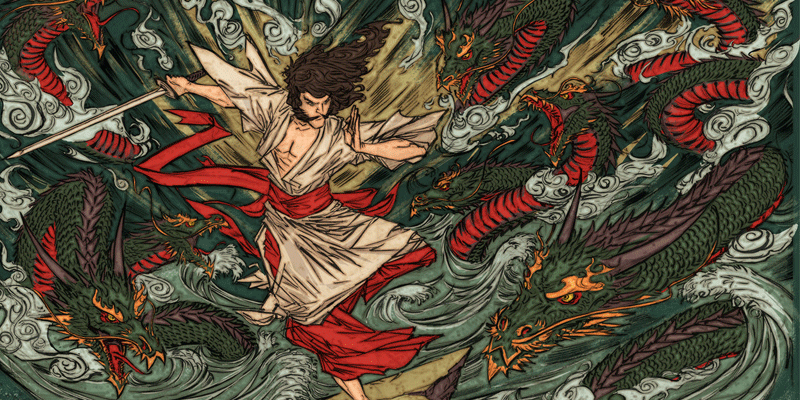Ethical hacking to malicious cyber activities In the intricate landscape of cybersecurity, the term "hacking" has…
The Influence of Japanese Mythology in Popular Anime
Anime has taken the world by storm, captivating audiences with its diverse themes, intricate characters, and stunning visuals. While it often delves into fantasy and the supernatural, one aspect that significantly contributes to its charm is the influence of Japanese mythology. These ancient stories have been woven into popular anime’s fabric, from Shinto deities to legendary creatures. In this article, we’ll explore the profound impact of Japanese mythology on some of the most beloved anime series.
Shinto Deities as Inspirational Figures
One of the most prominent elements of Japanese mythology is the pantheon of Shinto deities. Many anime creators draw inspiration from these gods and goddesses to shape their characters and narratives. For example, “Noragami” features Yato, a minor god struggling to gain recognition and build a shrine. His journey mirrors the tales of forgotten deities seeking worship and relevance in ancient Japanese folklore. This connection to Shinto mythology adds depth and authenticity to the story.
Yokai and Supernatural Creatures
Yokai, a class of supernatural creatures in Japanese folklore, has significantly impacted the anime world. Shows like “GeGeGe no Kitaro” and “Nura: Rise of the Yokai Clan” delve into the intricate world of these mystical beings. Yokai encompasses many creatures, from mischievous spirits to evil demons. Their presence in anime adds an element of mystery and excitement, connecting viewers to Japan’s rich folklore.
Mythical Creatures in “One Piece” and the Luffy Profile Picture
“One Piece” is a standout example of an anime that seamlessly incorporates elements of Japanese mythology. In this long-running series, the characters frequently encounter mythical creatures inspired by Japanese legends. From the powerful Dragon Dragon Fruit user Kaido, who embodies the spirit of the Azure Dragon of the East, to the ancient Zone-type Devil Fruits that grant their users the abilities of various mythical creatures, the series draws heavily from these myths. The Luffy profile picture sporting a dragon theme, often used by fans, pays homage to these captivating connections.
The Power of Kitsune in “Naruto”
Kitsune, fox spirits known for their cunning and shape-shifting abilities, hold a special place in Japanese folklore. In “Naruto,” Kurama embodies these kitsune spirits, a powerful-tailed beast sealed within the protagonist. The character’s development and connection with Naruto, the titular character, mirror traditional tales’ complex relationship between humans and kitsune. This connection to Japanese mythology adds depth to the story, making it even more engaging for fans.
The Legend of the Tengu in “Nura: Rise of the Yokai Clan”
The Tengu, bird-like creatures often depicted with long noses, are a staple in Japanese mythology. “Nura: Rise of the Yokai Clan” introduces viewers to the world of Yokai and features characters inspired by these mythical beings. The Tengu clan, led by Sojobo, is a prominent group within the series. The influence of the Tengu legend is evident in their appearance and abilities, showcasing the seamless integration of Japanese folklore into anime storytelling.
The Balance of Life and Death in “Bleach”
Japanese mythology often explores themes related to the afterlife and spirits, and “Bleach” takes this concept to a new level. The series revolves around Soul Reapers, who guide the souls of the deceased to the afterlife and protect the living world from evil spirits. The concept of the balance between life and death and the existence of different realms draws heavily from Japanese beliefs about the afterlife, adding depth and complexity to the anime’s world-building.
Inari and the Fox Deity in “Inari, Konkon, Koi Iroha”
Inari Okami, the Shinto deity of fertility, rice, and prosperity, is a central figure in the anime “Inari, Konkon, Koi Iroha.” The series explores the relationship between Inari and a fox deity, further intertwining elements of Japanese mythology. This unique blend of divine and everyday life creates a heartwarming and enchanting story that wouldn’t be possible without the rich cultural backdrop provided by Japanese mythology.
The Symbolism of the Yurei in “Anohana: The Flower We Saw That Day”
Japanese folklore is rich with ghostly apparitions known as Yurei, and “Anohana: The Flower We Saw That Day” weaves their symbolism into its narrative. The story revolves around a group of friends haunted by the ghost of their childhood friend, Menma. The Yurei theme adds an emotional and spiritual layer to the series, exploring themes of guilt, friendship, and the impact of loss.
Conclusion
The influence of Japanese mythology in popular anime is a testament to the rich cultural heritage of Japan. It not only adds depth and authenticity to the stories but also serves as a bridge connecting viewers to the country’s ancient traditions and beliefs. From Shinto deities and yokai to kitsune, tengu, and Yurei, these elements enrich the anime experience, making it more captivating and meaningful. So, the next time you set a Luffy profile picture or dive into a new anime series, take a moment to appreciate the profound impact of Japanese mythology on this beloved art form. It’s a testament to the enduring power of storytelling and the influence of cultural heritage on the world of anime.
Frequently Asked Questions
How does Japanese mythology influence character development in anime?
Japanese mythology often provides a rich source of inspiration for character development in anime. Characters may embody the traits or symbolism associated with specific deities, creatures, or spirits. This influence can shape their personalities, abilities, and the overall narrative of the series.
Are there any specific anime series that explore Japanese mythology in great detail?
Yes, several anime series delve deeply into Japanese mythology. Some notable examples include “Noragami,” “Naruto,” “Inari, Konkon, Koi Iroha,” and “GeGeGe no Kitaro.” These shows incorporate various aspects of Japanese folklore, offering viewers a rich and immersive experience.
How can viewers appreciate the influence of Japanese mythology in anime if they are unfamiliar with it?
Even if you need to be better-versed in Japanese mythology, you can appreciate its influence in anime by paying attention to character designs, abilities, and overall themes. Researching and learning about the myths and legends featured in the anime can enhance your understanding and enjoyment of the show.
Is there a comprehensive list of anime series drawn from Japanese mythology for viewers interested in further exploring this theme?
While there isn’t a single exhaustive list, many online resources and forums recommend anime series with solid ties to Japanese mythology. These lists can help you discover new shows and enjoy anime’s rich cultural tapestry.





This Post Has 0 Comments